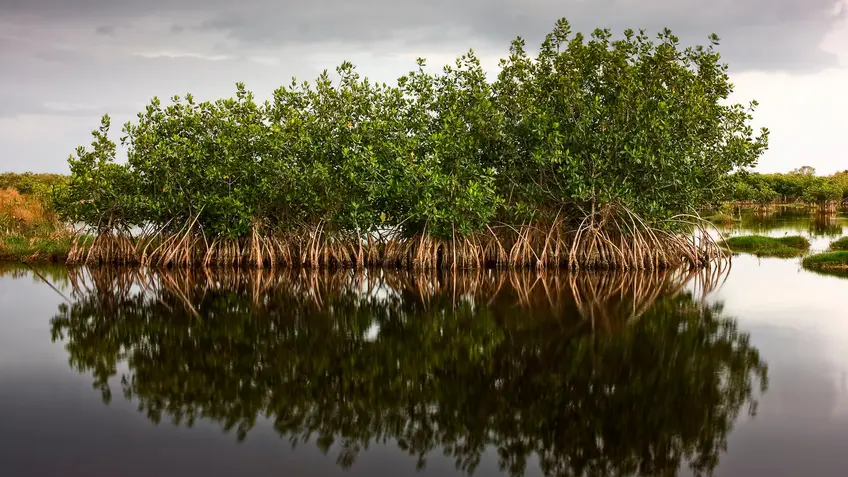The NDC Partnership Support Unit and The Pew Charitable Trusts Launch Blue Carbon Ecosystems Investment Guide
19 May 2025 – The NDC Partnership Support Unit and The Pew Charitable Trusts launched new guidance today to help countries to drive investment in blue carbon ecosystems.
Blue carbon ecosystems — including mangrove forests, seagrass meadows and tidal salt marshes — are essential to global climate mitigation due to their carbon sequestration and storage potential. Blue carbon ecosystems also offer critical benefits for people and nature, including protecting coastal habitat and biodiversity and helping communities adapt to growing climate risks stemming from floods and storms. They also support local economies through recreation and tourism. Despite their benefits, these ecosystems face significant threats globally.
With the next generation of climate pledges, or Nationally Determined Contributions (NDCs), due this year, countries have an opportunity to reflect the mitigation and adaptation benefits of blue carbon ecosystems in their revised targets and actions. The guidance launched today will prepare countries to integrate blue carbon into NDCs and climate investment strategies, paving the way for immediate implementation.
Offering a deep exploration of critical financing and policy, the guidance helps countries to navigate the complexities of blue carbon ecosystem financing and scale up investment in nature-based solutions. In particular, the guidance supports countries in prioritizing investment needs, mapping sources of finance across available public and private financing mechanisms and creating the right conditions to attract and use climate finance effectively.
Pablo Vieira, Global Director, NDC Partnership: “The conservation, restoration and sustainable management of blue carbon ecosystems offer a vital pathway for countries to strengthen community well-being and create new economic opportunities, while achieving their climate goals. With growing recognition of blue carbon in climate mitigation and adaptation, investment must keep pace. Integrating blue carbon into national climate policies, development strategies and financial planning is essential to translating this recognition into lasting, on-the-ground impact.”
Anelise Zimmer, Officer, The Pew Charitable Trusts: "Governments are seeking opportunities to finance their NDCs to conserve, restore and manage their blue carbon ecosystems. This new guidance outlines a suite of financial mechanisms, and the conditions required to implement them, for governments to consider as they design new and more ambitious NDCs."
The guidance is a supplement to the “Climate Investment Planning and Mobilization” (CIPMF) online tool, which prepares countries to navigate the steps required to unlock and channel climate finance. The CIPMF combines a broad framework with targeted resources that respond to countries’ specific needs. In addition to the blue carbon ecosystems’ supplement, the CIPMF includes specialized supplements on adaptation planning, subnational investment planning and climate-resilient food systems.
More About the CIPMF Online Tool
In response to country demand for finance support, the NDC Partnership and Green Climate Fund (GCF) launched a working draft of the CIPMF in 2023 at COP28 in Dubai with input from a range of actors, including private and public institutions and country representatives. Building on this guidance, the CIPMF online tool is a first-of-its kind resource that outlines six key stages across the climate investment planning and resource mobilization process.
Allowing flexible user-entry points for countries at different stages of the finance planning process, the CIPMF enables countries to identify climate finance needs and gaps, develop finance strategies and project plans and map support providers and finance opportunities — tailored to their national contexts.
The CIPMF promotes evidence-based decision-making in response to country-stated needs, including via specialized supplements around key thematic priorities.
